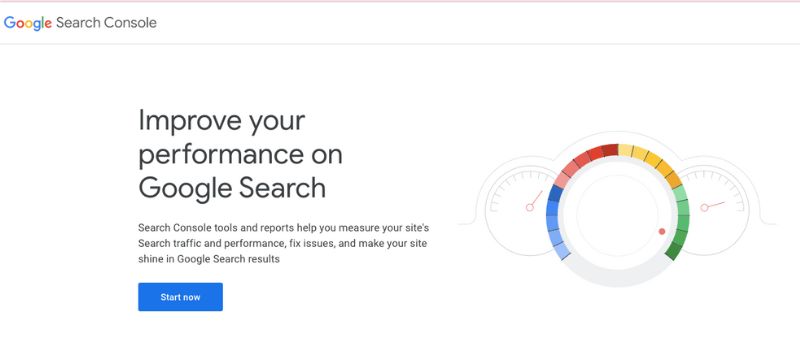If you have just created a website, then you are likely wondering how to get it found online. Check out these SEO Strategies for New Websites that you can use to increase your site’s visibility and attract more visitors.
SEO Strategies for New Websites

Learn how to write content that gets ranked faster and strategies to help your site rank higher in search engines. Here are some tips to help you speed up this process to see results sooner.
[lwptoc]
1. Low Hanging Fruit SEO

Low Hanging Fruit Meaning: an opportunity that comes with less of a struggle.
Low-hanging fruit SEO are techniques that produce quick effects with little work. It refers to picking keywords and phrases with lower competition but equally high potential in the SEO keyword arena.
The goal is to utilize these keywords to help your rankings climb because your competitors are not focusing on them.
The keywords are still relevant but aren’t the same as those used by other websites. It’s a fantastic approach for sites with a limited SEO budget since it will certainly produce fast success. Low-hanging fruit keywords assist you in getting to the top of a SERP.
Write on Low Competition Topics. In Search Engine Optimization, we call these keywords the low-hanging fruits.
- To do this, you may first write on topics nobody has written about before. Do this for the first 15-20 articles on your new site.
- Craft a well-curated, long, in-depth article for something that no one has ever written before to show Google that you belong at the number one spot.
Other low competition keywords are the Secondary Keywords and Long Tail Keywords.
Find Out How You Can Find and Use Long Tail Keywords for SEO Success 2022 here.
2. Submit URL to Google

Submit your published articles in the Google Search Console. Every time you publish a new one on your new website, submit each link to Google Search Console for your first batch of articles. Do this for Google to find your content.

Google Search Console is an SEO tool that helps you track and maintain your site’s visibility in Google search results.
By directly updating the indexing system, submitting your page or link ensures that it appears in Google.
Don’t worry, as you would only need to do this in the beginning stages of your site.
As soon as your website is 3-4 months old, Google should be able to crawl and index it naturally.
3. Google Featured Snippets

Go hard after the Google Featured Snippets in Search. Google Featured Snippets are a great way to get your content in front of more people.
At this site stage, ranking for snippets is much easier than ranking for the 3rd, 4th, or 5th spot.
Google displays featured snippets when their systems determine it will help people more easily discover what they’re seeking, both from the page Meta description and when they click on the link to read the page itself.
They’re especially helpful for those on mobile or searching by voice.
How To Get a Featured Snippet
If you want your new site included in featured snippets, there are several things you should keep in mind when creating content that will be eligible for this type of display.
You can get featured on Google Featured Snippets if you craft a better and more precise answer than the other sites out there, and if you’re in luck, there might not be a featured snippet yet, and it’s a no-brainer for you to go for it!
- Write concisely with clear language. Write a short, concise answer that will grab Google’s attention. You can do this by simply being the best short answer to what people are asking.
- Remember that writing the snippet in the right format when you do this is important. For example, it could be a short sentence, a structured list, or a bulleted list. You can find the best format for your answer by checking what the other snippets have done before taking over the snippet.
- Look for a snippet that’s not right on point where you can do a better and more precise answer.
- To win this snippet, look at similar searches for more competitive keywords.
- Make sure all titles and descriptions include relevant keywords and phrases.
- Avoid duplicating words from the title tag within the description tag.
- Use bullet points where appropriate.
- Once you create optimized content, submit it via Search Console. Then monitor its performance over time by checking every few months to see if it appears as a featured snippet!
It may take some time before Google starts showing your webpage this way, but once it does, users will love having access to information immediately without leaving search results! And remember – don’t forget about mobile optimization!
What Are SERP Features | Discover The 11 Parts of Search Engine
4. Make sure to answer the question completely.
Give your readers all the answers to their questions. But make sure you are still giving them enough reason to click from Google to your website.
- You can do this by crafting an enticing title that shows people that you have something more for them.
- You can do this by having a bulleted list as an answer but having a list more than what Google will typically show in its results.
Usually, Google will show from 5-to 7 bullet points in a list where the remaining bullets will not show on Google SERP. So to get those clicks to your site, you can say on your title something like 9 Best Ways to [Your Title] or 11 tips for [Your Title]. People will know they must click your title and read the article to get the full story.
5. Write to meet Search Intent.
To meet your reader’s search intent, write the exact answer to what they are searching for and nail it.
Show them you have what they are looking for at the beginning of your article.
One frequent mistake that copywriters make is coming at a certain subject at an angle and building momentum before answering.
They usually give their answers at the bottom part of the article to keep readers on the page and interested in the article. But, it’s much better to offer the full and just short, concise answer at the top of the blog post, even though some might bounce off your page right after getting that answer.
Google will know that these people found what they came for because they’re not going back to the search result page and clicking on the next answer.
By putting the most important part at the beginning of your article, people will trust that you know what you’re talking about and that you have the answer they’re seeking, and they are more likely actually to read the whole thing.
Learn more about How to Optimize for Keyword Search Intent.
6. Always check the competition in Google before writing.
Go to Google and search for the topic you want to write about first and foremost.
If your website is new, you just registered the domain, putting those first articles up.
If you find the correct answer in one of the articles that already rank in Google, there is no need to prioritize that topic.
7. Choose Your Traffic Wisely.
Choose Your Traffic Wisely. Get relevant eyeballs on your first articles.
Refrain from asking all your friends and family to check out all your articles if they are not into that topic.
While you may be getting a lot of visitors to your site, if they are not into your site’s topic, they would bounce off quickly, and Google will see these as bounce rates.
Because it’s not a good mesh with the audience you’re showing it to, This visitor behavior will tell Google that your page is not quality content.
So instead, find the people interested in what you have to write.
Check out: Target Audience: Who Would Most Likely Be Your Target Audience
8. Go into Facebook groups or Look into Forums.
- Promote Your Site into Facebook Groups.
- Go to Quora and ask some closely related questions about your content.
It’s important to show Google with the first visitors to your site that your content is clear content that people love and want to stick around. They want to click through to the next article and not bounce off because they have no interest whatsoever in your content.
So even though it can be very tempting to show all your friends your new website, wait a while and try to find the right places where people are looking for what you have to share.
Write the best possible content for your first articles and invite people over who have an interest in what you have to share.
Having people interested in your writing shows Google that you have excellent metrics that people want to stick around, and they love what you’re doing.
9. Write for Your Niche.
Write for Your Niche or Industry. Focus on creating great content relevant to what people in your industry search for online.
Do Keyword Research before even writing your first content. Find out How To Do Keyword Research here.
Keywords will help Google understand your site.
- Include keywords in your post titles and throughout the body of each article.
- Use your keywords in H1 tags and image alt text if applicable.
10. Leverage Social Media Platforms.
Leverage Social Media Platforms. Most people learn about new websites through Facebook or Twitter posts by friends or influencers they follow online who share links with their followers! So make sure to create profiles on these social media sites.
Use hashtags like #SEOStrategiesForNewWebsites when posting articles related to your niche topic area so others who might be interested in reading them will discover them too!
These are the SEO strategies for brand new websites. If done correctly, it will work for you! Of course, it takes time, but everything will fall into place once it starts working.

Do you know of any other SEO Strategies for New Websites? Please share in the comments section below.
Good luck with ranking your new site up! Please let me know in the comments section below if you’ve tried any of these tips and tricks. I’d love to hear your testimonies and stories!



